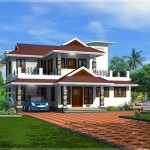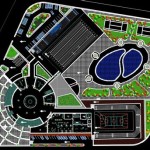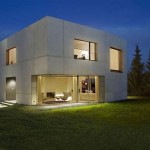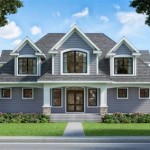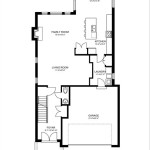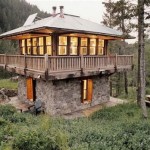One Story 3 Bedroom Modern House Plans
Modern one-story, three-bedroom house plans offer a blend of style, functionality, and accessibility. These designs cater to a variety of lifestyles, from young families to empty nesters, prioritizing open-concept living and seamless indoor-outdoor transitions. This article explores the key features and considerations involved in choosing a one-story, three-bedroom modern house plan.
Key Features of Modern One-Story House Plans
Modern architecture emphasizes clean lines, geometric shapes, and large windows to maximize natural light. This aesthetic translates into open floor plans that seamlessly blend living, dining, and kitchen areas, creating a sense of spaciousness and promoting interaction. Furthermore, these plans often incorporate sustainable design elements like energy-efficient windows and solar panel integration.
Benefits of a One-Story Design
Single-story living offers several advantages, particularly regarding accessibility and ease of maintenance. Eliminating stairs improves safety and makes the home suitable for individuals of all ages and abilities. Daily chores are simplified, and navigating the entire house becomes effortless. Additionally, one-story homes often have lower construction costs compared to multi-story designs.
Considerations for Three-Bedroom Layouts
Three-bedroom layouts are highly adaptable, accommodating families, individuals who work from home, or those who frequently host guests. Consider the desired relationship between bedrooms, whether clustered together for family proximity or separated for added privacy. Think about the location of the master suite relative to other bedrooms and living spaces, and evaluate whether each bedroom has sufficient closet space and access to bathrooms.
Open Concept Living Spaces
Open-concept living areas create a sense of community and facilitate interaction within the household. This design maximizes the use of space and makes smaller homes feel larger and brighter. Careful planning is essential to define zones within the open space, using furniture placement, area rugs, and lighting to distinguish between living, dining, and kitchen areas while maintaining a cohesive flow.
Indoor-Outdoor Connections
Modern house plans often prioritize the integration of indoor and outdoor spaces. Large sliding glass doors, patios, and decks blur the lines between inside and out, extending living areas and providing opportunities for al fresco dining and entertaining. Consider the orientation of the home to maximize outdoor space usage and privacy from neighboring properties.
Master Suite Design
The master suite serves as a private retreat within the home. Modern designs often feature spacious bedrooms with walk-in closets and ensuite bathrooms. Considerations for the master suite include its location within the house, the size and layout of the bathroom, and the inclusion of features like dual vanities, soaking tubs, and separate showers.
Garage and Storage Considerations
The garage plays a crucial role in functionality and storage. Decide whether a single, double, or triple garage is needed based on household needs and vehicle ownership. Consider incorporating additional storage space within the garage for tools, sporting equipment, and seasonal items. Evaluate the possibility of including a dedicated laundry area within the garage or elsewhere in the home.
Material and Finishes
The choice of materials and finishes significantly impacts the overall aesthetic and maintenance requirements of the house. Modern designs often feature a combination of materials like wood, concrete, and steel, emphasizing natural textures and contrasting elements. Consider the durability and longevity of materials, particularly for exterior cladding and flooring, opting for low-maintenance options when possible.
Budget and Site Analysis
Before finalizing a house plan, conduct a thorough budget analysis to ensure the design aligns with financial constraints. Factor in the cost of land acquisition, construction materials, labor, and permits. A site analysis is essential to evaluate the topography, soil conditions, and orientation of the property, ensuring the chosen house plan is suitable for the specific location.
Customization and Flexibility
While pre-designed house plans offer a starting point, customization is often possible to tailor the design to specific needs and preferences. Consult with an architect or designer to modify room sizes, layouts, and finishes. Consider future needs and potential lifestyle changes when customizing the plan to ensure the home remains functional and adaptable over time.
Energy Efficiency and Sustainability
Incorporating energy-efficient features and sustainable design elements can reduce long-term operating costs and minimize environmental impact. Consider including features like energy-efficient windows, insulation, and HVAC systems. Explore the possibility of integrating renewable energy sources like solar panels or geothermal heating and cooling.
Local Building Codes and Regulations
Ensure the chosen house plan complies with local building codes and regulations. Consult with local authorities to obtain necessary permits and approvals before commencing construction. Adhering to building codes ensures the safety and structural integrity of the home.

Simple One Story 3 Bedroom House Plans Modular Home Floor 1200 Sq Ft

Wonderful One Y House Designs With Three Bedrooms Ulric Home Model Plan Bungalow Style Plans

One Story 3 Bedroom Farm House Style Plan 8823

Contemporary Floor Plan Main 45 428 Modular Home Plans House One Story 1200 Sq Ft

V 533 Modern One Story House Custom 3 Bedroom With

Stylish One Story House Plans Blog Eplans Com

1 Story House Plans And Home Floor With Attached Garage

Modern One Story House Plan Mm 2372

V 407 3 Bedroom 2 5 Bath Modern Bungalow With Flat Roof Tiny Home Terrace One Story House Plan Top Deck Cabin Slope

Modern One Story House With 3 Bedrooms And A Garage


